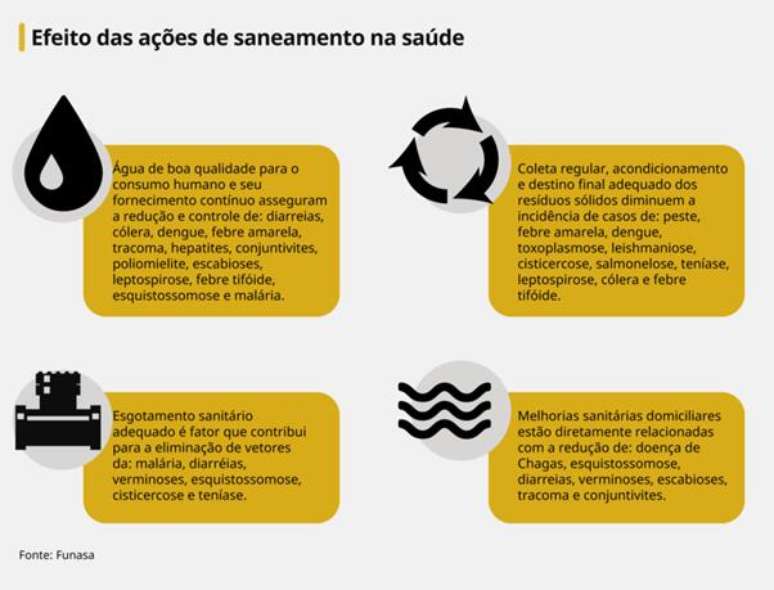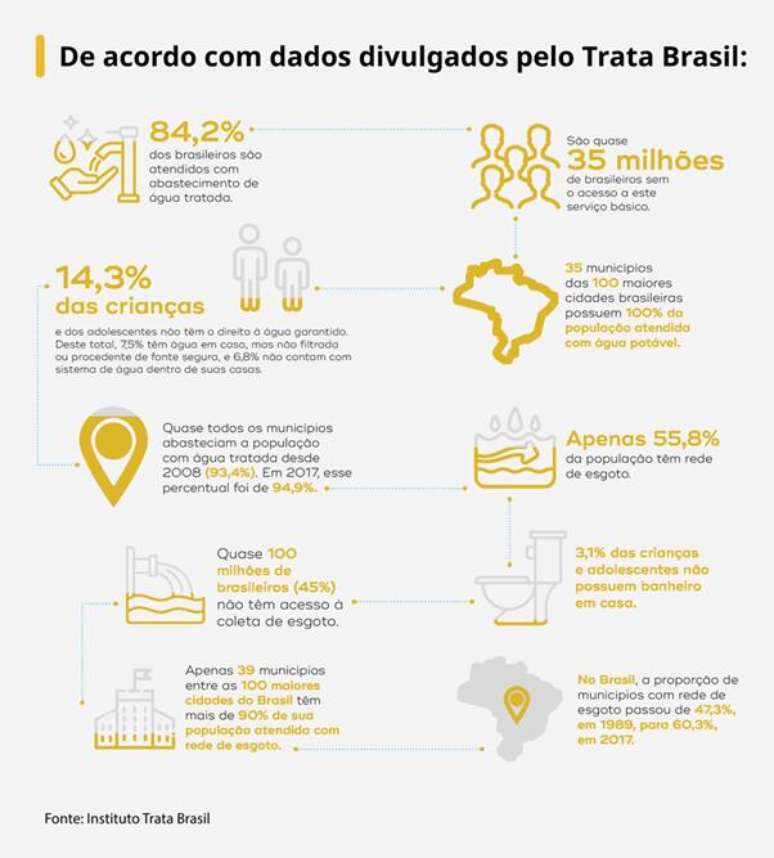There are several mitigation techniques and practices that can be adopted to reduce the effects of droughts.
Techniques and practices for mitigating the effects of drought in the health sector
Periods of drought have a significant impact on the sanitation sector, impacting water availability and quality, increasing production costs and the risk of water rationing, while also increasing the risk of disease proliferation. It is important that the sanitation sector takes steps to address these influences and ensure adequate access to safe drinking water for the Brazilian population. Dry seasons can have different effects on the sanitation sector in Brazil.
Water scarcity in times of drought can reduce water availability, which leads to a shortage of drinking water. This affects the supply of water for public supply systems, as well as for water-dependent industries, agriculture and other economic activities.
Water availability is further reduced during times of drought and water consumption increases, especially the demand for potable water, especially in densely populated urban areas. This can lead to overloading of water supply systems, which can affect water quality.
Decreased water quality in times of drought, especially in rivers, lakes and reservoirs, due to attenuation of water flow and increased concentration of pollutants, can lead to algal blooms, growth of harmful bacteria and other water system quality problems.
Lack of clean water increases the spread of waterborne diseases such as diarrhea, cholera and typhoid fever. It can contaminate the most vulnerable populations, such as children, the elderly and people with chronic diseases.
Droughts can increase the cost of producing potable water due to the need to use more advanced water treatment technologies, transport water from more distant sources, and the need to implement water conservation measures.
In situations of prolonged drought, water supply systems can be affected in such a way that water rationing is necessary to ensure an adequate supply of drinking water. This can affect people’s daily lives as well as the country’s economic activity.
There are several mitigation techniques and practices that can be adopted to reduce the effects of droughts on the sanitation sector in Brazil. Some of them are:
- Water conservation is one of the most effective techniques for dealing with water scarcity during droughts. This can be done through awareness campaigns to reduce water consumption, repairing leaks, using water-saving devices in homes and businesses, among other measures.
- Rainwater harvesting is a technique for collecting and storing rainwater for later use, which can be used for watering plants, washing cars, and other activities that don’t require potable water. This can reduce the demand for fresh water during droughts.
- Reuse water treatment is a technique that allows wastewater from sewers and other sources to be treated and reused for use in activities that do not require potable water, such as irrigation, street washing and other industrial purposes .
- The use of water-efficient technologies can help reduce water usage during droughts, such as the use of drip irrigation systems, low-flow faucets and showerheads, among other solutions.
- Water monitoring and management is an important practice to ensure water availability during droughts. This can be done through the implementation of water quality and quantity monitoring systems, control of water harvesting and use, contingency plans for periods of scarcity, among other measures.
- Investing in and improving sanitation infrastructure is an important practice to ensure adequate access to safe drinking water during droughts. This may include expanding water supply systems, building water reservoirs, treating water and wastewater, among other solutions.
In summary, mitigating the effects of droughts on the sanitation sector in Brazil involves a combination of techniques and practices, including water conservation, rainwater harvesting, water treatment reuse, the use of technologies for water efficiency, water monitoring and management, and investments in sanitation infrastructure.

Edited by Editoriale – AWE
Source: Terra
Rose James is a Gossipify movie and series reviewer known for her in-depth analysis and unique perspective on the latest releases. With a background in film studies, she provides engaging and informative reviews, and keeps readers up to date with industry trends and emerging talents.






